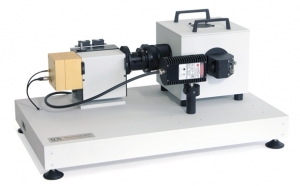Fluorescence Spectrometers
FluoTime 200 (discontinued)
Modular Fluorescence Lifetime Spectrometer
The FluoTime 200 is discontinued as of April 2020.
The FluoTime 200 is discontinued as of April 2020.
All Information given here is reliable to our best knowledge. However, no responsibility is assumed for possible inaccuracies or omissions. Specifications and external appearances are subject to change without notice.
The FluoTime 200 is discontinued as of April 2020.
The FluoTime 200 is discontinued as of April 2020.
The FluoTime 200 is discontinued as of April 2020.
The FluoTime 200 is discontinued as of April 2020.
The FluoTime 200 is discontinued as of April 2020.
The following documents are available for download:
Latest 10 publications referencing FluoTime 200
The following list is an extract of 10 recent publications from our bibliography that either bear reference or are releated to this product in some way. Do you miss your publication? If yes, we will be happy to include it in our bibliography. Please send an e-mail to info@picoquant.com containing the appropriate citation. Thank you very much in advance for your kind co-operation.



